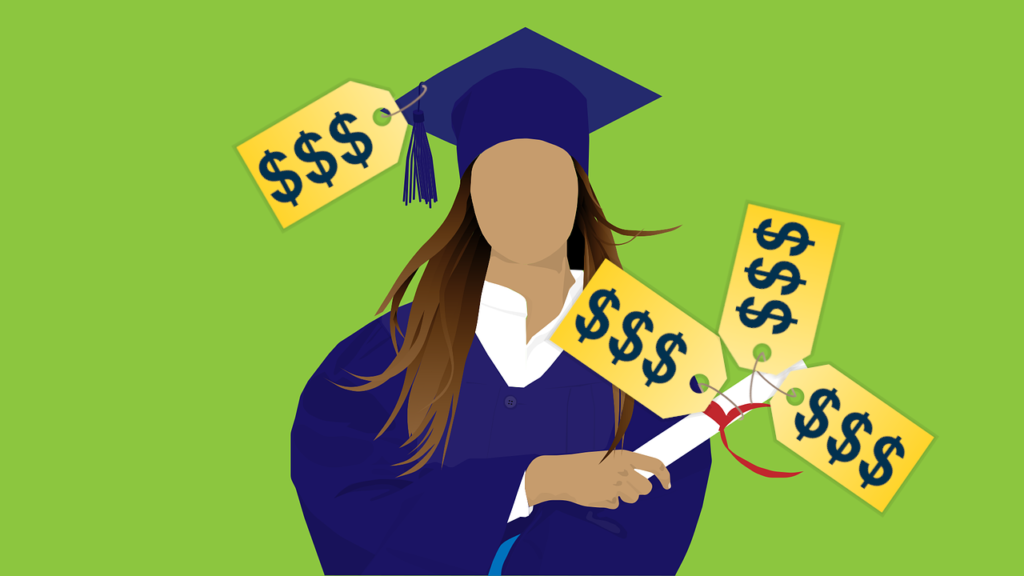
The pros and cons of Federal Student Loan Forgiveness
Entering the workforce with thousands of dollars in student loan debt might be quite intimidating. Instead of establishing a financial foundation and saving for the future, you’re laboring to pay for a life chapter that has long since ended.
While there are few shortcuts to paying off student loan debt, there are true forgiveness programs such as federal student loan forgiveness that can help you clear your debt slate and save thousands.
However, it is not totally clear. There are severe requirements for who can qualify and what must be done before their loans can be forgiven.
Here’s what you should know before deciding whether or not to pursue this option.
Types of federal student loan forgiveness
Federal student loan forgiveness is divided into two categories: teacher loan forgiveness and public service loan forgiveness.
Teachers who teach full-time for at least five consecutive years in low-income schools can have up to $17,500 of their student loan debt canceled through the Teacher Loan Forgiveness Program. Direct subsidized and unsubsidized loans, as well as unsubsidized Federal Stafford Loans, are all eligible.
More information on the Teacher Loan Forgiveness Program may be found here.
Under the Public Service Loan Forgiveness program, those who work full-time for a qualifying employer can have the remainder of their qualifying direct loan balance repaid after making 120 monthly payments (payments must have been made after October 1, 2007 and cannot be made in less than ten months).
The pros of federal student loan forgiveness
You may be able to discharge a considerable percentage of your student loan debt.
The Public Service Loan Forgiveness Program, unlike the Teacher Loan Forgiveness Program, does not have a restriction on the total amount of debt that can be forgiven. The remaining sum can be forgiven if you have been current with your payments and made 120 payments over a ten-year period. Savings might be considerable for those who are heavily in debt.
Many jobs are eligible.
To qualify for forgiveness, you do not have to work in a purely public service profession. It’s about who you work for, not what you do, under the Public Service Loan Forgiveness Program.
You will not be hit with a tax bill as a result.
Did you know that some federal repayment arrangements result in a tax bill after forgiveness because the IRS considers the forgiven amount to be taxable income? Fortunately, the Teacher Loan Forgiveness Program and the Public Service Loan Forgiveness Program do not fall into this category.
The cons of federal student loan forgiveness
There are stringent requirements to qualify and remain qualified.
If you already have a qualifying job or work for an eligible business, that’s a wonderful start, but there’s a long list of other requirements. For example, one of the numerous restrictions in the Teacher Loan Forgiveness Program stipulates that if your five years of teaching began before 2004, you may only be eligible for $5,000 in loan forgiveness. If you fail to submit the required yearly documentation for the Public Service Loan Forgiveness Program, you may be disqualified.
The bottom line is that you must be educated on program criteria and ensure that you are doing all possible to remain eligible.
It may limit your work opportunities.
If student loan forgiveness is on your mind when looking for a job or an employer, you might be in for a long road. Student loan forgiveness is an excellent perk for people who are already interested in working in government, but these roles are not for everyone.
Before you can even apply, you must be committed to remaining put for 5-10 years. If this wasn’t already in the works, you could find yourself with fewer career options.
What if you aren’t eligible for either of these programs?
While the Teacher Loan Forgiveness Program and the Public Service Loan Forgiveness Program are the two federal forgiveness programs, you may be eligible for federal income-driven repayment schemes. These might result in loan forgiveness on the outstanding sum after a set period of time.
Conclusion
If an education is vital to you, you will almost certainly have to incur student debt. However, there are strategies to reduce the amount of money you borrow. Consider colleges with lower tuition expenses or greater scholarship chances. Before making a choice, consider the advantages and downsides of federal student loan forgiveness.
With a solid foundation in technology, backed by a BIT degree, Lucas Noah has carved a niche for himself in the world of content creation and digital storytelling. Currently lending his expertise to Creative Outrank LLC and Oceana Express LLC, Lucas has become a... Read more